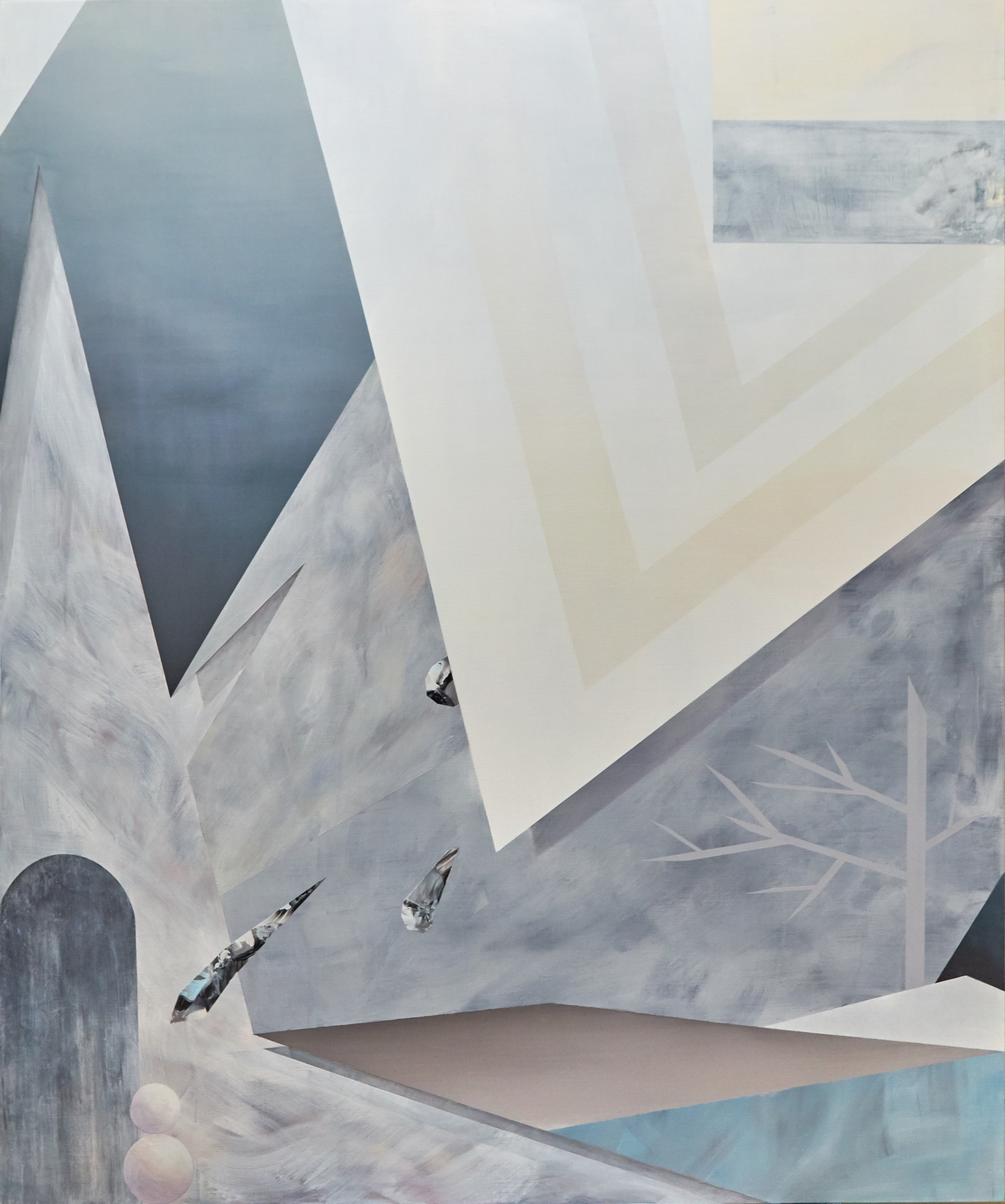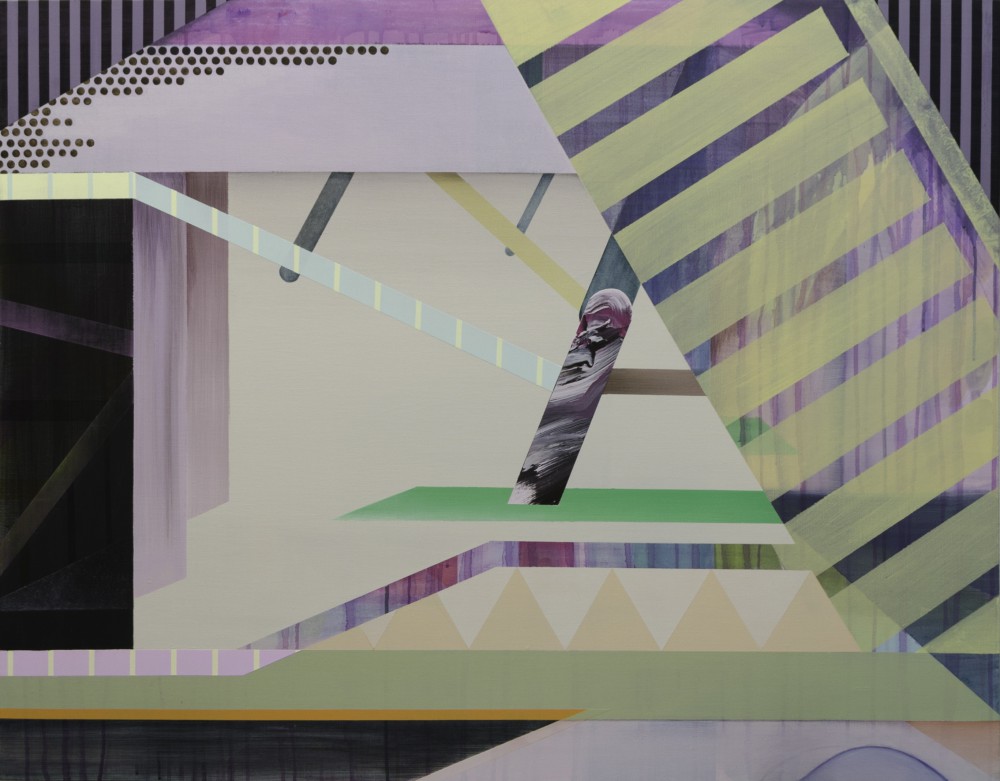
Click here for more information about the artist. Kosuke Kato says, "I decompose the visual information of the landscape and transform it into geometric shapes. I'm interested in the story behind the creation of a painting," he said, and we talked about his work. First of all, could you tell us about your works? -Basically, I use landscapes as my motif. I don't just paint landscapes, but I break down the visual information and replace it with a geometric pattern, which is the process I use to create my works. I use Laura Owens and others as my reference. The reason why I started painting landscapes is not so much trivial as it is that I wanted to create large works. The larger the subject matter, the better, and the larger the subject matter, the more likely it was to be the entire world, or the landscape. In addition, landscapes have a lot of information and are easy to dismantle for reintegration.

snowscape, 194×162cm For more information about my works, click here. Have you been painting landscapes since the beginning of your career? -No, my initial style was a combination of realistic painting and minimalism. It was actually an easy idea (laughs). (laughs) Realistic paintings are selling well, and I thought that if I added the Japanese concept of "apology and loneliness" to the paintings, they would sell. However, as I was searching for something to do, I thought, "If I'm going to do this, I'd better stick to the direction I like," and began to seriously study the history and scene of contemporary art. In addition to visiting museums in Tokyo, I also read art books and added to my knowledge. It's a bit goofy, but I think I was influenced by the context of the Western art scene. It was just around 2019 that I started painting my current landscapes. When you create, is it the idea or your own sensibility that is important? Or the context of the art? -I'm more conscious of tradition. I think you can't create something new if you don't know the history. I think you can only create new paintings if you know the old ones. I want to be a painter, and as such, I want to be in the context of creating new paintings.

Awkward Tree, 91×117cm For more information about my work, click here. What is your view on newness? -Newness" may be a different issue, but I personally find Cubism interesting right now. That movement is highly abstract, but in my opinion, the essential aim of Cubism is to reintegrate images. In that sense, I think there is a similarity with my painting methodology of "deconstructing and reintegrating visual information. I collapse the image once. My paintings may be the result of doing that same technique with a different image. Changing the subject, what made you want to become an artist in the first place? -I liked to draw. But I was never good at it. I didn't have any experience of being praised very much. I think my high school art teacher may have been a big influence. He showed me various art books, including one on Jackson Pollock, and I was very impressed by it. I was impressed by it. I think the origin of my interest in art is a feeling of curiosity.

Nojima, 91×91cm Click here for details What do you plan to do in the future? -I started a series of landscape paintings in 2019, and recently I've been thinking again that my interest is focused on the process of creating paintings. On the other hand, I'm wondering about painting as a medium that shows stories. I would like to go back to the history of what painting is, and paint works that can show the story of the process of the creation of painting, and I am more interested in that. The other thing I think is most important is contemporaneity. Today, we live in an age of search, and it would be interesting if I could pull in images from this age and incorporate them into my paintings. I would like to pursue a new type of painting that can only be created in this age. For more information about the artist, click here.